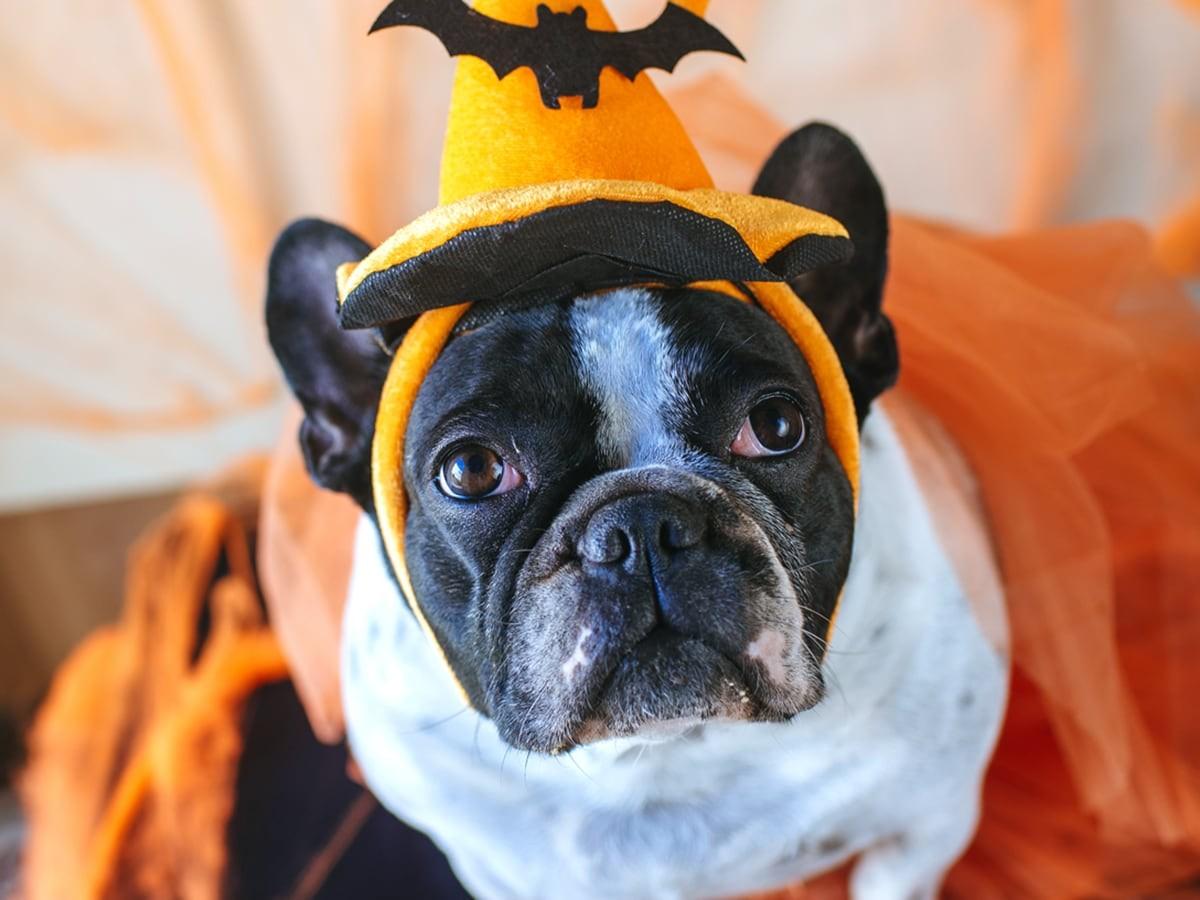Halloween is a fun and festive time for many, but it can be a night filled with potential hazards and anxieties for our pets. From tempting treats to spooky decorations, it's important to take extra precautions to ensure your furry friends stay safe and happy throughout the holiday.
Pet-Proofing Your Halloween Treats
One of the biggest dangers for pets on Halloween is candy. Chocolate, especially dark chocolate, is toxic to dogs and cats. Xylitol, a sugar substitute found in many candies and gums, can also be fatal to dogs. Even seemingly harmless candies can cause stomach upset or intestinal blockages if swallowed whole or with wrappers.
Keep all candy out of reach of pets, and remind children not to share their treats with their furry companions. If you suspect your pet has eaten something they shouldn't have, contact your veterinarian or an emergency animal hospital immediately.
Pet Costumes: Friend or Foe?
While pet costumes can be adorable, make sure they are safe and comfortable for your pet. Avoid costumes that restrict movement, vision, hearing, or breathing. Be mindful of small, dangling parts that can be chewed off and swallowed.
Choosing and Introducing Costumes the Right Way
Here are a few tips on how to choose a costume for your pet:
Prioritize fit and function. Your dog should be able to sit, lie down, walk, see, hear, breathe, drink, and potty without impediment. Avoid tight elastic, restrictive sleeves, and anything that blocks vision or hearing.
Watch for stress signals. Lip-licking, pawing at the outfit, freezing, persistent scratching, or trying to bite the material mean you should step back a level or choose a simpler costume.
Skip chewable add-ons. Loose strings, bells, pom-poms, and plastic bits are ingestion risks. Simple is safer.
Pro tip: “Think of the costume as just something to wear. Fit comes first. If your pup really dislikes the headpiece, skip it,” adds Kerry Lemerise, Puppy Program Manager - East at Guiding Eyes for the Blind. “Most importantly, have fun and respect your dog’s comfort level.”
How to get your dog used to the costume
“Try the costume on before the big day. Let your pup walk around the house and then the yard or driveway. If they turn to bite it or show concern, keep sessions short, pair it with something they enjoy, and build up gradually.” — Leslie Stephens, Puppy Program Manager – West at Guiding Eyes for the Blind.
A quick, positive plan
Break it into pieces. Start with one easy item, like a bandana or the body piece without fasteners.
Pair with rewards. Put the item on for up to 30 seconds while offering a favorite tug game or treats, then remove it. End the session before your dog gets fidgety. Reward-based, incremental exposure reduces stress and improves cooperation.
Build duration. Repeat short sessions over 2 to 4 days, adding time in small steps and then adding the next piece.
Do a movement check. Walk a quiet loop indoors, then a short loop outside. Confirm your dog can perform simple cues and move freely.
Managing Stress and Anxiety
The constant doorbell ringing, unfamiliar visitors in costumes, and loud noises can be very stressful for pets. Consider creating a haven for your pet in a quiet room away from the Halloween commotion. Provide them with familiar toys, blankets, and a comfortable place to rest.
If your pet is anxious, talk to your veterinarian about calming supplements or medications. In extreme cases, it may be best to board your pet or arrange for them to stay with a friend or family member during the festivities.
Trick-or-Treating Safety
If you take your dog trick-or-treating, ensure they are on a leash and wearing proper identification. The excitement and unfamiliar surroundings can easily lead to a lost pet. Avoid crowded areas and be mindful of other dogs and children.
If you're staying home to hand out candy, make sure your pet is secure indoors. The constant opening and closing of the door can create opportunities for escape. Consider putting a sign on your door reminding trick-or-treaters not to let your pet out.
Outdoor Hazards
Be aware of potential outdoor hazards on Halloween night. Keep pets away from lit candles, jack-o-lanterns, and other decorations outside. Watch out for wildlife that may be attracted to the holiday commotion.
Conclusion
By following these simple safety tips, you can help ensure that Halloween is a fun and safe experience for all family members, including your beloved pets. Remember to pet-proof your home, manage your pet's stress and anxiety, and be cautious when taking your pet out on Halloween night. With a little preparation, you can enjoy the festivities while keeping your fur family safe and sound.

I’m Charlie: canine enthusiast with a knack for figuring out why my dog, Dallas, is more infatuated with tennis balls than me. My lifelong passion for dogs has created a dedication to help other pet parents better understands their furry family members!
Halloween pet safety. (n.d.). In American Veterinary Medical Association. Retrieved September 25, 2024, from https://www.avma.org/resources-tools/pet-owners/petcare/halloween-pet-safety
Halloween Safety for Pets. (n.d.). In VCA Animal Hospitals. Retrieved September 25, 2024, from https://vcahospitals.com/know-your-pet/halloween-safety-for-pets
Halloween safety tips for pets. (n.d.). In The Humane Society of the United States. Retrieved September 25, 2024, from https://www.humanesociety.org/resources/halloween-safety-tips-pets











